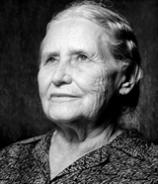The Golden Notebook
About the Book
The Golden Notebook
"Knowing was an 'illumination.' During the last weeks of craziness and timelessness I've had these moments of 'knowing' one after the other, yet there is no way of putting this sort of knowledge into words. Yet, these moments have been so powerful, like the rapid illuminations of a dream that remain with one waking, that what I have learned will be part of how I experience life until I die."
--Anna Wulf in The Golden Notebook
"The two women were alone in the London flat."
So begins Doris Lessing's most famous novel, published in 1962, and now considered one of the major works of twentieth-century literature. It is the story of Anna Wulf, a writer and single woman, who lives with her young daughter in a flat, occasionally renting out a room, less for the income than out of a reflex of social obligation. Laboring against a writing block, following the immense success of her autobiographical debut novel about a group of Communists in colonial Africa, Anna struggles to find a way to integrate the multiple selves that fragment her personality and make her life unbearably painful. Out of "fear of chaos, formlessness-- of breakdown," she decides to keep four notebooks, one for each component of her life--black for her experiences in Africa, red for current politics, yellow for a fictionalized version of herself, and blue for a diary. Although framed by a conventional novel called Free Women, the point of the novel, according to Lessing, is the "relation of its parts to each other." By viewing her life from these different angles, going over her experiences, gauging her responses, and carefully probing her intertwined layers of consciousness, Anna eventually manages to unify her identify in one notebook. As she does so, she comes to terms with her growing disillusionment with communism, the trauma of emotional rejection and sexual betrayal, professional anxieties, and the tensions of friendship and family.
The Golden Notebook
- Publication Date: February 3, 1999
- Paperback: 640 pages
- Publisher: Harper Perennial Modern Classics
- ISBN-10: 006093140X
- ISBN-13: 9780060931407









